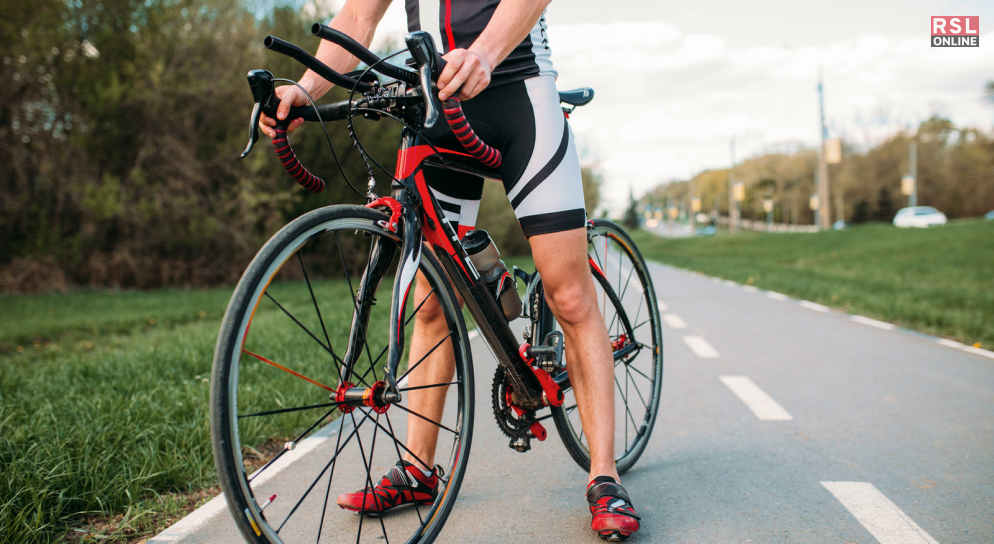Many prominent riders have discussed how to get on and off of their bikes. Now, like a good old recipe from your grandmother, it’s passed down through the generations.
I learned it a certain way. Maybe the Belgians learned it a different way, and their cookies taste different than our cookies, and for good reason.
Coming back to cycling, different types of tracks suits different purposes and different levels of entertainment.
However, in this article, we discuss what a Cyclocross Bike is and its whereabouts.
What Is a Cuclocross?
Before you try to understand “what is a cyclocross bike”, you need to get an idea of what cyclocross is.
Cyclocross is a distinct term related to marketing. It amalgamates the elements of road cycling, steeplechase, and biking.
These races are relatively short (about 20 to 60 minutes). Furthermore, the races take place in enclosed circuit courses in the park. Hence, you can say that the tracks are a combination which makes driving interesting.
What Is a Cyclocross Bike?

What is a cyclocross bike? You will find numerous searches on the internet platform. We will tell you.
These bikes are specific forms of drop bikes designed to combat diverse racing surfaces. Like other forms of bikes, these bikes are also observing a revolution, and the developers are adding some of the latest features.
As we mentioned, these bikes traverse different surfaces like fields, grass, gravel, and sometimes sand. The frame of the cyclocross bike uses different geometric forms.
Major characteristics of the bike include a shorter frame, taller bottom bracket, and they have taller positions.
How To Remount A Cyclocross Bike?
After we discuss on, “ what is a cyclocross bike ”, we will discuss the different ways you could remount a cyclocross. So, without wasting any further time, let’s bring out the discussion.
Choose The Appropriate Gear
A lot of what I talk about will be based on personal preference and how you learned it. Today, I will teach you how I learned it and how I like to get on and off the bike.
So, the first thing that you need to think about any time you’re at the cross-track is what gear you will be in.
Whatever obstacle you come up to, whether it’s a jump, a gap, a barricade, a log, or stairs?
What gear am I going to be in? It’s a big thing that you have to always think about any time you’re at a cycle cross-track. So why do you not want to be in big gear when you get off the bike?
Let’s imagine that you’re flying down some swooping downhill, and then you’re going to get off the barriers, and then it kind of goes off and a little bit slightly uphill, and you’re in too big of a gear.
What’s going to happen? You get the bike away from you, and then you go to get back onto it, and it’s not going to be very efficient because I can’t get the bike back up to speed without muscling it really hard.
So now that we know what gear we’re going to be inland, which, for this moment, going so slow is going to be our easiest one, the next thing we need to do is take our right legend to get it around the back of the bike.
If you want to learn more about what cyclocross race is, check the article.
Then you want to take your right hand and you want to put it three-quarters of the way down the top tube so that you’re set up.
Points Of Contact
So now the next thing that you want to make sure that you do is you’ve got these points of contact.
Three points: left-hand, left shifter, right-hand three-quarters of the way down the top tube, and then you’ve got your saddle position right here on the seat.
We’ve gone through so far thinking about what gear you need to be in; you want to make sure that you get your leg around the back of the bike.
You want your three points of contact: left hand, left shifter, right hand, three-quarters of the way down the top tube, and on your hip.
So, when you’re coming into the barriers, you want to make sure that you have your points of contact set up a long way out.
The last thing you want to do is have this seat underneath your armpit with the pedals all up in your knees. That’s not going to be good for anyone.
What Are the Physical Benefits of Cyclocross?

Now that we discussed what a cyclocross bike, the remoting approaches, and the nitty-gritty are, it’s time to understand the physical benefits.
1. Improving Heart Capacity
One of the prime benefits of cyclocross biking is improving heart health. Yes, you got it right: cyclocross courses require a sudden change in gear and the power surges. It leads the body to use different levels of force.
With the speed levels and the difficulty levels, it is sure to pump your heartbeats. In other words, these bikes improve heart muscle functioning.
2. It Increases The Capacity Of The Lungs And The Consumption Of Oxygen
Another bodily benefit that you are going to get with cyclocross is improving the ability of the lungs.
Please keep in mind that the maximum capacity of oxygen consumption during the exercise is 1 milles every minute. Hence, oxygen and oxygen are essential during any physical activity.
3. Increasing Anaerobic Threshold
Another benefit of the cyclocross is increasing the anaerobic threshold.
As a result, it increases the anaerobic threshold. The heart muscles become stronger and more resistant during the most intense physical activity.
These benefits are great considering the fact that heat failures and related complexities are increasing with time.
Lastly, we would like to add that the muscles consume nutrients present in the blood. It produces lactic acid.
The accumulation of lactic acid causes muscle pain and cramping and helps athletes to rest.
Conclusion
Hope you guys enjoyed this article. If you do, please give it a thumbs up, leave us a comment below, and let me know what your problem and solution are if you liked mine.
Additional Reading:




























